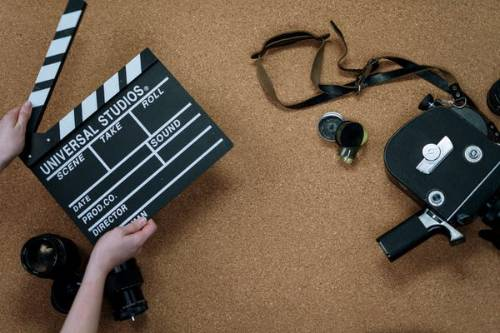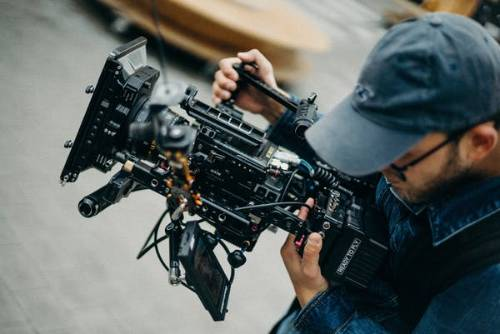It’s not always easy to isolate modern cinematography and judge it apart from the other elements of a visually engaging story. However, the fingerprints of a talented cinematographer and director can be found on every stunning film. The films on this list are astounding, and in some cases, they set new standards for cinematic excellence in this decade.
In the past 20 years, there have been many technological advances that have helped cinematographers a lot. However, nothing is more important than the overall effect that master cinematographers create with the images and movements they capture. Some of the best examples from this century are presented below. The products featured here are chosen at random by our editorial staff, and if you make a purchase after clicking on one of our links, we may get a commission.
Silence
Before “Silence,” Martin Scorsese and Mexican DP Rodrigo Prieto worked together on “The Wolf of Wall Street,” but their partnership blossomed on that film. The film’s clear imagery and odd color palette are amazing, even for a Scorsese movie. It’s not unexpected given how meticulously he plots each of his movies. Prieto, on the other hand, was able to give the movie a polished look despite the problems he had to deal with. Prieto is able to master challenging terrain and extreme weather conditions by using fog, nature, the sea, and the sun as tools in his outdoor studio of theatrical exhibition films shot.
In the labyrinth of pan
Cinematographer Guillermo Navarro, who has worked with Guillermo del Toro for a long time, won an Oscar for his outstanding contribution to the film’s captivating dark fantasy setting. Navarro, a countryman of del Toro’s, has contributed to six of the director’s films, including Cronos, The Devil’s Backbone, Hellboy, Pan’s Labyrinth, Hellboy II: The Golden Army, and Pacific Rim. Navarro directed “Jackie Brown,” which Quentin Tarantino wrote and produced, and he has worked with Robert Rodriguez on a number of projects. The success of “Pan’s Labyrinth,” a movie that tells its sad story mostly through images, comes from the delicate balance it strikes between being funny and sad.
Navarro’s use of deep blues and ominous yellows results in a style that combines elements of fantasy and horror. The camera moves smoothly and uncomfortably from the dream world to the harsh reality. Feeling the images sweep over you like a roiling sea while simultaneously inspiring reverence for God is a heady combination in film recorder filmmaker’s magazine.
The one above me
It’s hardly shocking that Paul Thomas Anderson directed and shot his latest picture, which still has no title (opening in December). PTA has complete creative control over the visuals he creates, from selecting the lenses necessary to capture his vision, regardless of whether he is working on “The Master” with veteran cinematographer Robert Elswit or up-and-coming photographer Mihai Malaimare Jr. Anderson’s photography, on the other hand, has progressively emphasized the texture, color, and enchantment of film, despite the fact that the transition from film to digital has rarely altered a director’s work.

In “The Master,” Anderson turns up the psychedelic dial on his photos to immerse us in the haze of a war veteran being captivated by a con artist, and the shift to 70mm was crucial to accomplishing this. To sleep peacefully, we can thank the pervasiveness of the water, the light, and our surroundings. What you see in each and every frame, as opposed to filters or editing, is a colorful, compelling image with accurate colors and accurate historical information. The film’s notoriety has skyrocketed since its premiere, and perhaps the fact that these pictures are designed to stick in your mind is to blame for its visual storytelling and natural light.
Digital filmmaking
The pinnacle of the innovative storytelling techniques and cinematic vocabulary made available by the advent of low-cost, high-sensitivity digital cameras. Director and co-cinematographer Michal Marczak worked with his two stars to craft a documentary-style film that plays less like a documentary and more like a cinematic portrait of a restless adolescent. Marczak relies extensively on cinematography in his creative process, which is common among film directors shoot movies.
He and his co-DoP, Maciej Twardowski, would routinely show up early to adjust the lighting for his scenes depicting endless party worlds. Marczak doesn’t just show up to an event with a camera and start snapping pictures; instead, he makes his way through the festivities while crafting his story with the help of a little Sony AS7 camera and some makeshift accessories of modern technology visual effects.
Vacuum or nothingness
In “Painting with Light,” John Alton eloquently explains how he developed the subtle noir lighting schemes that revolutionized Hollywood (a title later used for a stunning documentary about the technique). I really hope that Benoit Debie will write his own version of “Painting with Color” and put it out in the future. As a result of the recent emergence (and tremendous advancements) of versatile, lightweight, and inexpensive color LED lighting, the body of work produced by Debie over the past two decades—which relied more on gels, filters, and practicals—has become one of the most influential in digital cinematography using digital video cameras.
Debie’s efforts with Harmony Korine (“Spring Breakers,” “The Beach Bum”) and Gaspar Noé (“Climax,” “Irreversible”) are receiving increased critical attention for their daring use of color, while “Enter the Void” typically leaves filmmakers bewildered. This is because modern filmmakers have more leeway to incorporate color and try out different lighting techniques. Noé and Debie are given the flexibility to develop a unique, flashing, and at times unstable visual language as a result of the characters’ usage of psychedelic drugs, the story of a wounded dealer experiencing an almost out-of-body experience, and the neon-lit Tokyo at night such films film production.
Color evokes feelings, conveys ideas, and tells stories all on its own. Debie’s use of color, like in his Florida-based work with Korine, is only part of what makes the palette unique; the way he filters and catches the color and texture of the terrain in front of his lens is just as important. —CO You can rent or buy on Amazon, and you can watch movies online with services like IFC Films Unlimited or AMC + of digital filmmaking of the motion picture art form.
